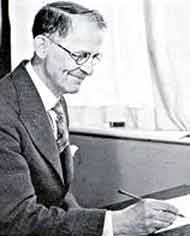Heath Robinson
| W. Heath Robinson | |
|---|---|
 |
|
| Born |
31 May 1872 Islington, England |
| Died |
13 September 1944 (aged 72) London, England |
| Nationality | British |
| Occupation | Illustrator and Cartoonist |
| Known for | Drawings of odd contraptions |
William Heath Robinson (31 May 1872 – 13 September 1944) was an English cartoonist and illustrator best known for drawings of ridiculously complicated machines for achieving simple objectives.
In the UK, the term "Heath Robinson" entered the language during the 1914–1918 First World War as a description of any unnecessarily complex and implausible contrivance, much as "Rube Goldberg machines" came to be used in the US from the 1920s onwards as a term for similar efforts. "Heath Robinson contraption" is perhaps more often used in relation to temporary fixes using ingenuity and whatever is to hand, often string and tape, or unlikely cannibalisations. Its continuing popularity was undoubtedly linked to Second World War Britain's shortages and the need to "make do and mend".
William Heath Robinson was born at 25 Ennis Road on 31 May 1872 into a family of artists in an area of London known as Stroud Green, Finsbury Park, north London. His father Thomas Robinson (1838-1902) and brothers Thomas Heath Robinson (1869-1954) and Charles Robinson (1870–1937) all worked as illustrators.
His early career involved illustrating books – among others: Hans Christian Andersen's Danish Fairy Tales and Legends (1897), The Arabian Nights (1899), Tales from Shakespeare (1902), Gargantua and Pantagruel (1904),Twelfth Night (1908), Andersen's Fairy Tales (1913), A Midsummer Night's Dream (1914), Charles Kingsley's The Water-Babies (1915) and Walter de la Mare's Peacock Pie (1916).
...
Wikipedia
